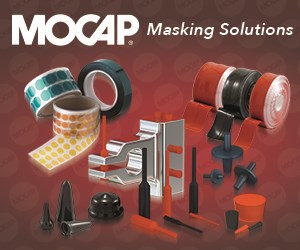Rhodium Plate and Blisters
Question: Our shop does rhodium plating and recently we have run into a problem when plating rhodium over small flat washer-like copper disks.
Question:
Our shop does rhodium plating and recently we have run into a problem when plating rhodium over small flat washer-like copper disks. The parts are first cleaned and then gold-flashed with 8–10 microinches of gold. The rhodium is than applied over the gold flash. We apply 25–35 microinches of rhodium. The parts blister around the edges and many are streaked. What are we doing wrong? F. T.
Answer:
The streaks are probably the best clue to what is wrong here. I suspect that you do not have a heavy enough gold layer on the parts. I would increase the thickness of the gold flash. An alternative is to replace the gold flash with a heavier nickel strike.
Related Content
-
Troubleshooting Alkaline Zinc
One of the most common problems that can arise when plating with alkaline zinc is an imbalance of brightener in the solution. In this helpful Ask the Expert article, Chad Murphy of Columbia Chemical discusses how different zinc metal concentrations and brightener concentrations can impact efficiency.
-
A Chromium Plating Overview
An overview of decorative and hard chromium electroplating processes.
-
Products Finishing Reveals 2024 Qualifying Top Shops
PF reveals the qualifying shops in its annual Top Shops Benchmarking Survey — a program designed to offer shops insights into their overall performance in the industry.













